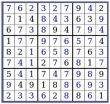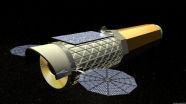(Press-News.org) Researchers in the Midwest are developing microelectronic circuitry to guide the growth of axons in a brain damaged by an exploding bomb, car crash or stroke. The goal is to rewire the brain connectivity and bypass the region damaged by trauma, in order to restore normal behavior and movement.
Pedram Mohseni, a professor of electrical engineering and computer science at Case Western Reserve University, and Randolph J. Nudo, a professor of molecular and integrative physiology at Kansas University Medical Center, believe repeated communications between distant neurons in the weeks after injury may spark long-reaching axons to form and connect.
Their work is inspired by the traumatic brain injuries suffered by ground troops in Afghanistan and Iraq. Despite improvements in helmets and armor, brain trauma continues to be the signature injury of these wars.
Brain damage carries a heavy toll that may include loss of coordination, balance, mobility, memory and problem-solving skills, with soldiers suffering from mood swings, depression, anxiety, aggression, social inappropriateness and emotional outbursts.
Scientists believe that as the brain develops, it naturally establishes and solidifies communication pathways between neurons that repeatedly fire together.
Nudo and others have found that during the month following injury the brain is redeveloping, with fibers that connect different parts of the brain undergoing extensive rewiring.
"The month following injury is a window of opportunity," Mohseni said. "We believe we can do this with an injured brain, which is very malleable."
Mohseni has been building a multichannel microelectronic device to bypass the gap left by injury. The device, which he calls a brain-machine-brain interface, includes a microchip on a circuit board smaller than a quarter. The microchip amplifies signals, called neural action potentials, produced by the neurons in one part of the brain and uses an algorithm to separate these signals – brain spike activity - from noise and other artifacts. Upon spike discrimination, the microchip sends a current pulse to stimulate neurons in another part of the brain, artificially connecting the two brain regions.
The miniature device currently remains outside the body, connecting to microelectrodes implanted in two regions of the brain.
Nudo has been studying and mapping brain connectivity in a rat model and developing a traumatic brain injury model to test the device and the neuroanatomical rewiring theory.
The researchers began collaborating in 2007. This month they received a $1.44 million grant from the Department of Defense Congressionally Directed Medical Research Program to continue their work and begin testing and improving the device.
During the next four years, they expect to understand the ability to rewire the brain in a rat model and to determine whether the technology is safe enough to test in non-human primates. If tests show the treatment is successful in helping recovery from traumatic brain injury, the researchers foresee the possibility of using the approach in patients 10 years from now.
INFORMATION: END
Rewiring a damaged brain
2010-09-28
ELSE PRESS RELEASES FROM THIS DATE:
Baby boomers raise midlife suicide rate
2010-09-28
Baby boomers appear to be driving a dramatic rise in suicide rates among middle-aged people, a new study finds.
The suicide rate for middle-aged people – a group considered relatively protected from suicide and with historically stable suicide rates – took an upward jump between 1999 and 2005, according to research by sociologists Ellen Idler of Emory University and Julie Phillips of Rutgers University.
Their study has been published in the September/October issue of the journal Public Health Reports.
"The findings are disturbing, because they're a reversal of a long-standing ...
GMO research: Report on concrete measures to avoid mixing of GM and conventional maize
2010-09-28
A report presented today by Health and Consumer Policy Commissioner John Dalli to the Agriculture Council concludes that specific measures relating to storing and the application of isolation distances can help limit or avoid the co-mingling of genetically modified (GM) maize with conventional and organic maize. In particular, the Best Practice Document, prepared by the European Coexistence Bureau (ECoB) and published by the European Commission's Joint Research Centre (JRC), notes that storing seeds adequately and applying spatial isolation are the best ways to limit or ...
Homeless youths most often victims of crime: study led by York U researcher
2010-09-28
TORONTO, Sept. 27, 2010 − Homeless young people are victims of crime at rates that society would consider unacceptable for any other group, according to a new report by researchers at York University and the University of Guelph.
The report, Surviving Crime and Violence: Street Youth and Victimization in Toronto, highlights the degree to which it is street youth themselves − often perceived as delinquent and dangerous − who are vulnerable to crime and violence.
"The very people we are taught to fear are the ones who are most at risk," said Professor ...
Study finds brainstorming 'rules' can lead to real-world success in business settings
2010-09-28
Researchers have long held that there are steps that can be taken to make brainstorming sessions more productive. New research from North Carolina State University finds that these recommendations actually do contribute to success when applied in real-world business environments.
"Previous research has laid out best practices that are conducive to brainstorming, or group decision making, and we wanted to see whether using those practices makes a difference in the real world," says Dr. Joe Brazel, associate professor of accounting at NC State and co-author of a paper describing ...
Interaction with neighbors: Neuronal field simulates brain activity
2010-09-28
The appearance of a spot of light on the retina causes sudden activation of millions of neurons in the brain within tenths of milliseconds. At the first cortical processing stage, the primary visual cortex, each neuron thereby receives thousands of inputs from both close neighbors and further distant neurons, and also sends-out an equal amount of output to others.
During the recent decades, individual characteristics of these widespread network connections and the specific transfer characteristics of single neurons have been widely derived. However, a coherent population ...
Rapid test to save Indian vultures from extinction
2010-09-28
Diclofenac, an anti-inflammatory agent, has been deployed successfully in human medicine for decades. In most EU countries medication containing Diclofenac is only approved for treatment of humans. In India, Pakistan and Nepal it has been deployed in veterinary medicine as well since the 90s, in particular for livestock. When vultures feed on cattle carcasses, they too ingest the drug. As a result, the populations of three species of these birds of prey – the Indian vulture, the Oriental white-backed vulture and the slender-billed vulture – have shrunk to a mere three percent ...
Quarks 'swing' to the tones of random numbers
2010-09-28
At the Large Hadron Collider at CERN protons crash into each other at incredibly high energies in order to 'smash' the protons and to study the elementary particles of nature – including quarks. Quarks are found in each proton and are bound together by forces which cause all other known forces of nature to fade. To understand the effects of these strong forces between the quarks is one of the greatest challenges in modern particle physics. New theoretical results from the Niels Bohr Institute show that enormous quantities of random numbers can describe the way in which ...
New sound recording device helps doctors study link between cough and reflux
2010-09-28
Coughing episodes are closely related to gastroesophageal reflux symptoms in patients who experience chronic cough, irrespective of other diagnoses, according to a new study in Gastroenterology, the official journal of the American Gastroenterological Association (AGA) Institute. Gastroesophageal reflux occurs when the acid contents of the stomach back up, or reflux, into the esophagus. This typically produces heartburn, a burning sensation below the sternum where your ribs come together.
"This is the first study to investigate the temporal relationship between cough ...
Gigantic mirror for X-radiation in outer space
2010-09-28
It is to become the largest X-ray telescope ever: The International X-Ray Observatory (IXO), which has been planned in a cooperation between NASA, ESA and Japan's Aerospace Exploration Agency JAXA, will be launched into space in 2021 and provide the world with brand new information about black holes and, thus, about the origin of the universe. Its dimensions are gigantic: The surface of the mirror alone, which is to capture, for example, the cosmic X-radiation of black holes, will be 1300 m2 in size. It will consist of commercially available silicon wafers with pores of ...
A study analyzes consumer protection laws in Spain
2010-09-28
The idea behind this research arose because of the huge disparity in existing laws regulating the area of consumer protection, which made it necessary, according to the researchers, to carry out a systematic study to develop a "general report" which would gather the common principles and regulations regarding the different laws governing consumer protection. During the time this research study was underway, the Texto Refundido de la Ley General para la Defensa de los Consumidores y Usuarios (Consolidated Text of General Law of Consumer Protection) (LGDCU) was published; ...



